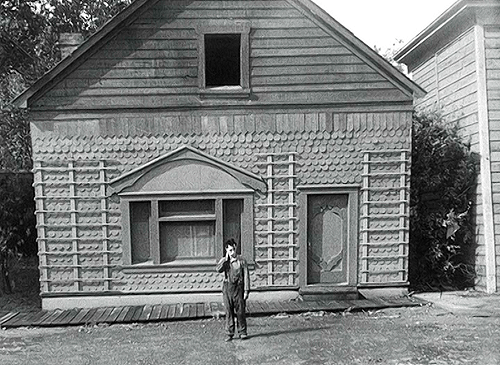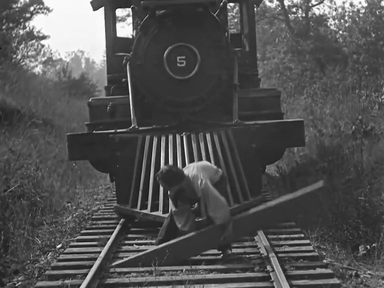It’s probably not true, but there is a story that Buster Keaton got his name from none other than Harry Houdini. Young Buster (real name Joe) was born into a vaudeville family with a traveling show that often performed alongside Houdini. One day, the toddler took a tumble down a flight of stairs, sat up, shook it off and never cried. Houdini was to have said, “Well, that kid’s a real buster!” The kid born in Kansas in 1895 claimed the story was true, anyway.
What is certainly true about Buster Keaton was his willingness to go to any length for a stunt. His films are filled with cliff-dangling, rope-swinging, train-dodging tricks. Keaton had a physicality that made him seem both invincible and constantly in danger. His nickname of “The Great Stone Face” was earned by his ability to display a lack of emotion despite the chaos swirling around his nonchalant characters. 
Considering how often he put himself in danger – albeit with much rehearsal – it’s amazing he wasn’t hurt more often. His most serious injury was a fractured neck while performing a stunt around a water tower in Sherlock, Jr. He even played the stunt man for other characters in his movies.

He also had the ability to understand film as a medium. The movies were new but he had a sense of how movies worked on audiences and he experimented with the options not available in a stage performance. Camera tricks were just as important as the physical stunts. It was another way for him to play with the audience.
Despite how delightful and hilarious Keaton’s films are, there is often a dark edge to them, something that makes them stand the test of time. These are not just pratfalls for a moment of laughter. These are movies that make you feel something across a century of time.
Originally written for DVD Netflix
